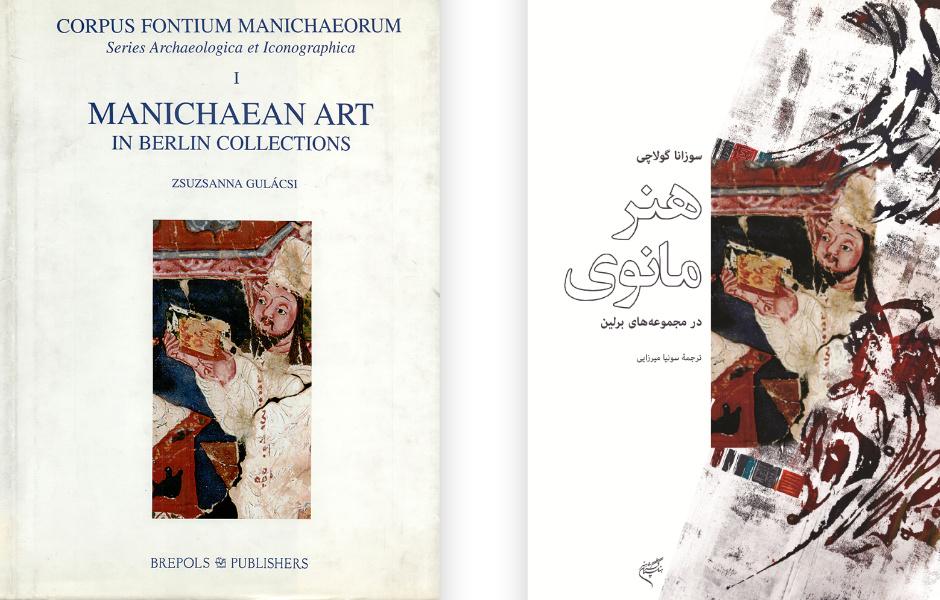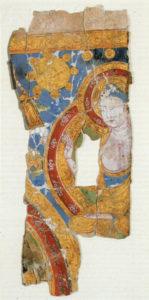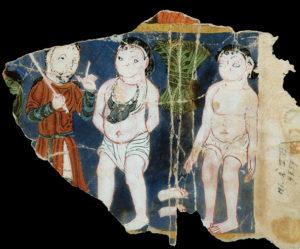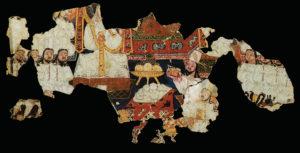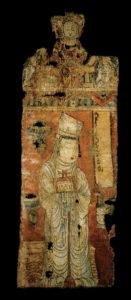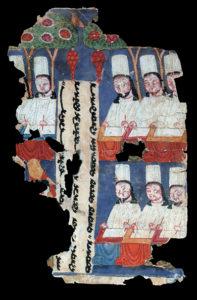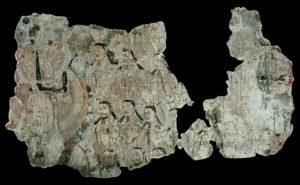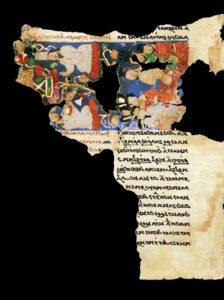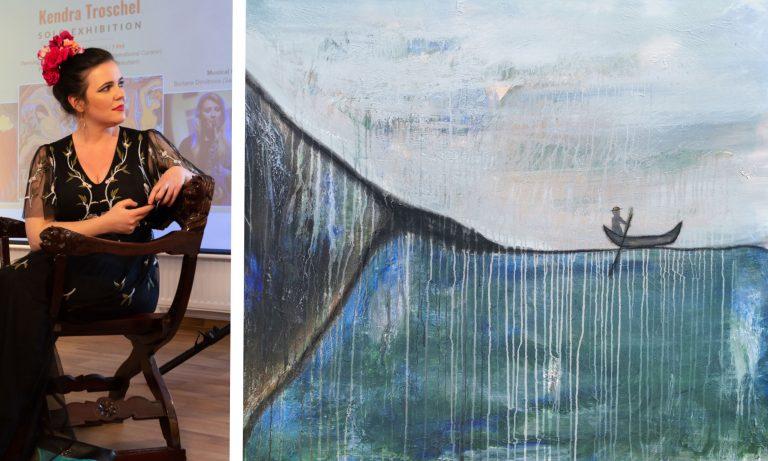Manichaeism was founded by Mani (216–274 AD) at the beginning of the Sasanian Empire (224–651 AD) and quickly spread from the Roman Empire to China. Mani believed that he was the Paraclete whose manifestation was heralded by Jesus Christ. Accordingly, he revealed the truth and instructed his disciples to write it down so that people could be guided, benefit from it, and be freed. His wisdom was great and full of symbolism that stimulated thought, guiding people towards deeper contemplation. To gain access to the revealed truth, Mani used both words and images, instructing his wisdom through books and adorning them with colors so that both literate and illiterate people could learn from them. He composed seven canonical books and created a Picture-book, “Ardahang,” which described his complex teachings with images and motifs. Mani is considered to be the founder of picture books in the history of Iranian art.
The first primary Manichaean sources are known to scholars derived from the Turfan region of East Central Asia, which turned out to be the richest sources of Manichaean texts and art. Buried under sand in the ruins of mud-brick buildings, or deposited in sealed storage areas built into cave walls or stupas, these artifacts laid in wait for centuries. Finally, the Prussian expedition discovered them at the beginning of the 20th century. Following the returns of each of the four expeditions between 1904 and 1912, German scholars secured and organized the remains and began work on publishing their findings. The materials brought back by the Prussian expeditions are housed in two Turfan collections in Berlin. The artistic one belongs to the collection of the Berlin State Museums of Prussian Cultural Heritage Foundation and is housed in the Museum of Asian Art . The texts are possessed by The Berlin-Brandenburg Academy of Sciences and Humanities and reside in the Berlin State Library of the Prussian Cultural Heritage Foundation.
The first research on Manichaean illuminated pieces, known as Manichean art, was conducted by Albert von Le Coq (1860–1930). Subsequently, further research uncovered significant aspects of this religion and documented features of its artistic culture. The most significant work written in the subject was done by Zsuzsanna Gulácsi, a board member of the International Association of Manichaean Studies. In 2001, she made available to researchers all 94 pieces of Manichaean art from Turfan, which are kept in the two Berlin collections, along with scientific analyses (Brepols). The book “Manichaean art in Berlin collections”is divided into two parts. The first part is divided into four categories according to the media: Illuminated books, Book bindings, Textiles, and Wall paintings. The second part, which is the appendices, contains the Texts (Middle Iranian and Turkic texts associated with Manichaean art written by Jason David BeDuhn), Items with missing parts, Regrouped fragments, Items of unconfirmed Manichaean origin, and Assigning the elements of the Manichaean artistic corpus. Recently, the book has been translated into Persian by Sonia Mirzaie and published by the Iranian Academy of Arts, Iran (2023).
© of images of the art pieces and the English cover: Zsuzsanna Gulácsi
© of image of the Persian cover: Sonia Mirzaie
